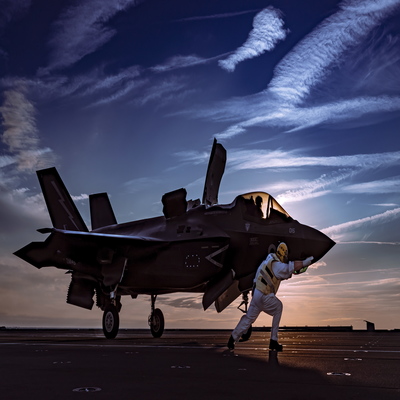This five-day course introduces the main ways in which defence simulation systems make use of networking technology.
At a glance
-
- Dates
-
- 02 - 06 Mar 2026
- Duration5 days
- LocationCranfield University at Shrivenham
- Cost£2,250 - Standalone Short Course fee Concessions available
Course structure
Five Days, comprising a mixture of classroom instruction and hands-on practical work and examples utilising the applications, LANs and WANs available in the Defence Academy Simulation and Synthetic Environment Laboratory (SSEL).What you will learn
On successful completion of the course you will be able to:
- Discuss and recommend network strategies and architectures appropriate to the needs of a particular simulation system,
- Carry out basic network configuration and testing functions using standard network tools,
- Configure a range of simulation applications to demonstrate the issues and processes of simulation interoperability,
- Discuss and explain the issues in the design and application of different Synthetic Environment solutions to address a range of topics in the defence arena.
Core content
Course content:
- Fundamentals of computer communications, networking, LANs and WANs,
- Main hardware components of computer networks (bearer media, interfaces, switches, routers, etc),
- The ISO OSI architecture and network protocols, especially TCP/IP,
- The management, configuration and testing of networks for distributed simulation (including DSEEP),
- Networking standards in defence simulation (eg DIS, HLA, TENA),
- Strategy for the development and use of networked and distributed simulations and synthetic environments in UK and allies,
- Practical exercises in design, construction and operation of LAN and WAN based networked simulations using the Defence Academy Simulation and Synthetic Environment Laboratory.
Where student numbers permit, a larger practical distributed simulation exercise is normally held subsequently to the course itself, as an additional follow-on activity of one to two weeks duration. This provides an opportunity to practice and confirm instruction by linking the SSEL via WAN to a number of off-site facilities. While this exercise is mainly intended as an advanced module in NDS for registered postgraduate students, short course participants are also welcome to participate.
Upgrade to a professional qualification
When taken as a Short Course for Credit, 10 credit points can be put towards the Defence Simulation and Modelling MSc.
Find out more about short course credit points.
Who should attend
The course is intended for those seeking to be educated customers of defence federated and distributed systems, typically being involved in acquiring, specifying, managing, building or operating such solutions.
Students must have successfully completed Modelling and Simulation: Foundations in order to take this as a Short Course for Credit, and the completion of either Real-Time Graphics and War Gaming and Combat Modelling would be advantageous. There are no prerequisites if taken as a Standalone Short Course.
Concessions
A limited number of MOD sponsored places are available.
There are limited places on these modules. You may not receive an offer until places have been confirmed, usually 1 to 2 weeks before the start date.
How to apply
To apply for this course please use the online application form.
Read our Professional development (CPD) booking conditions.
